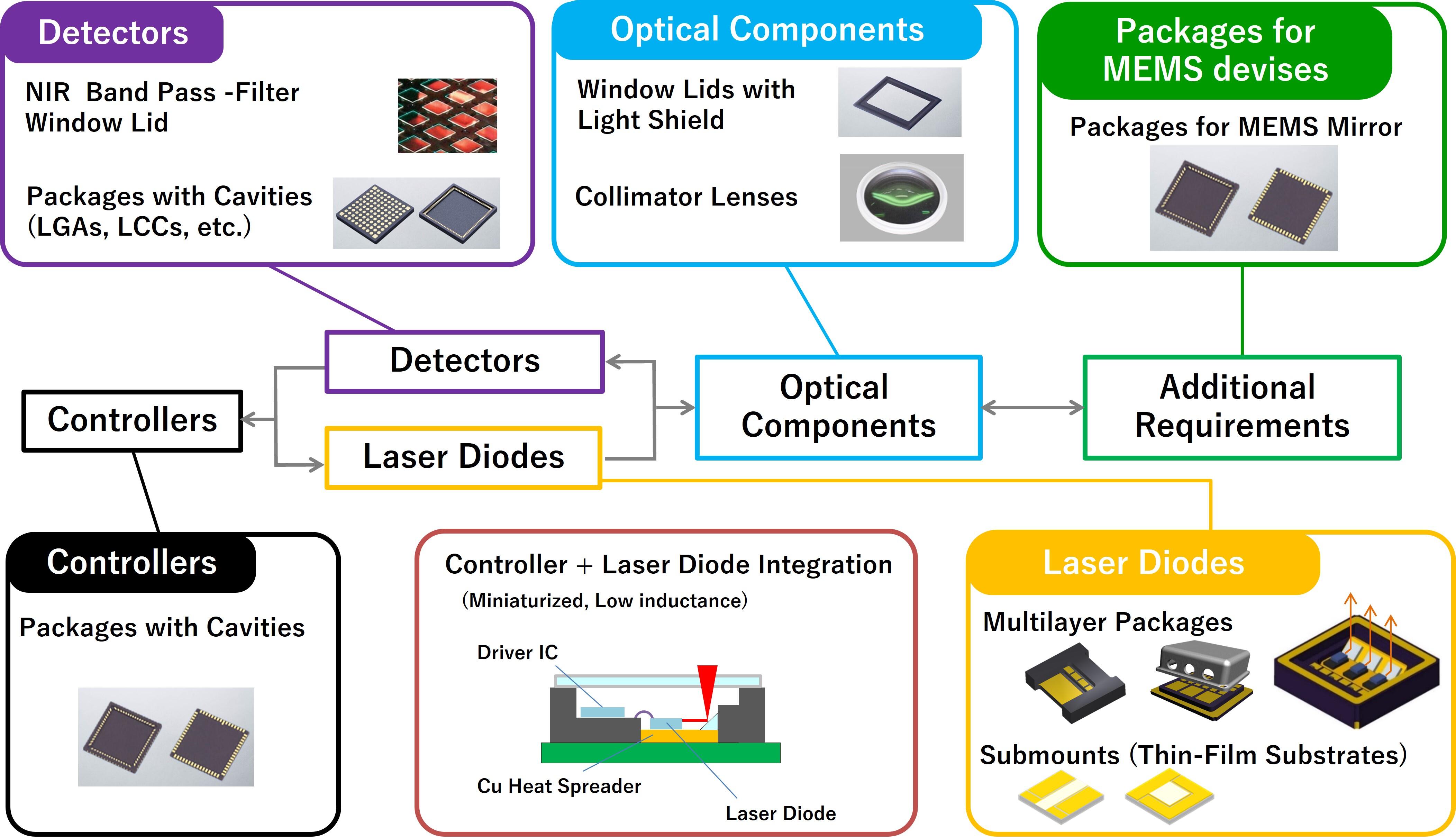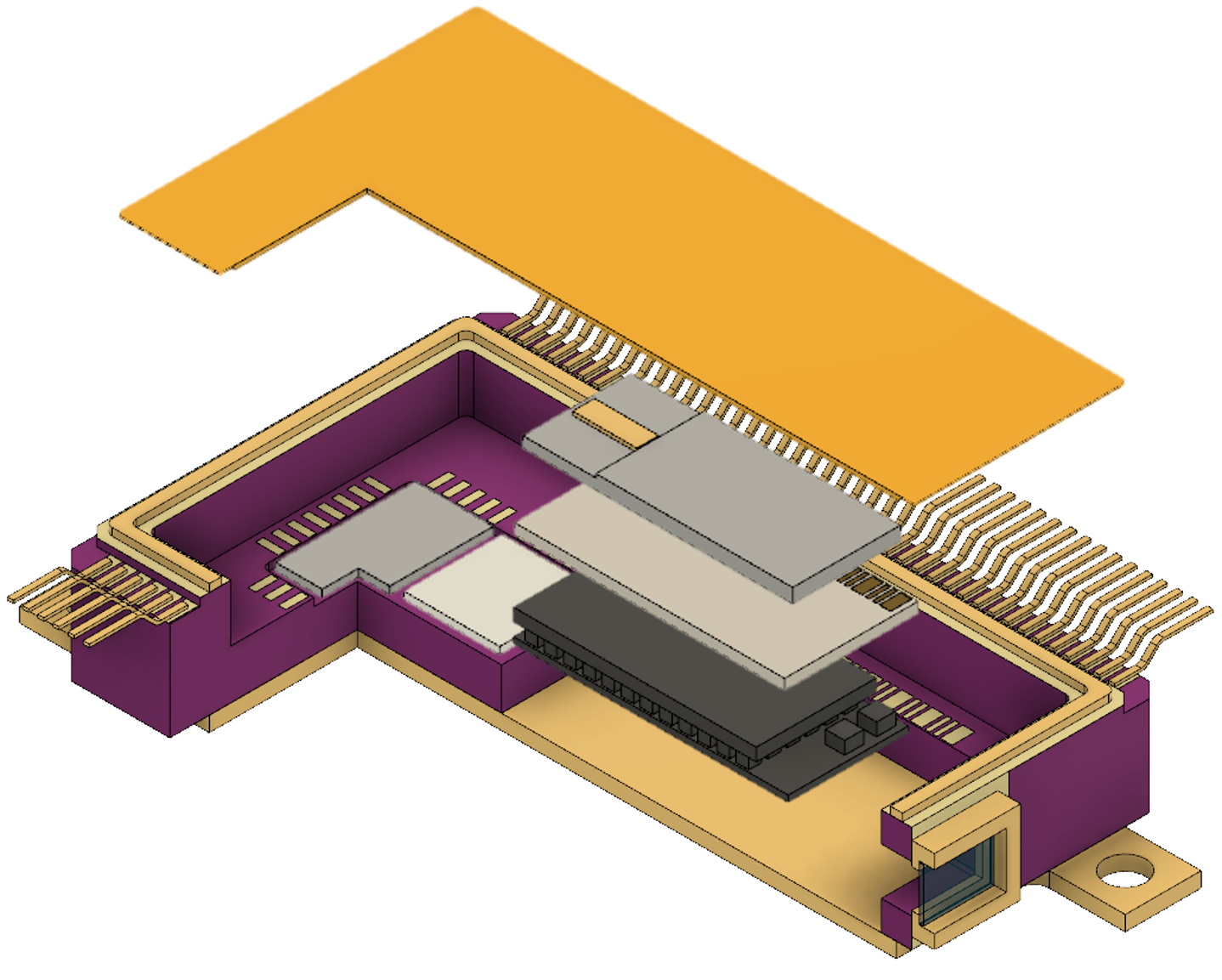
Kyocera offers standard packages and lids for critical components in LiDAR* applications, and can create custom solutions upon request.
*LiDAR: Light Detection and Ranging
Key Components

More details about LiDAR packaging can be found here.
Kyocera also offers LiDAR Module packages that integrate multiple components and functions.

Automotive LiDAR Packages
Introducing packages for automotive LiDAR modules and discrete emission components.
What is LiDAR?
LiDAR is an abbreviation for "Light Detection and Ranging," a sensing technology using laser light to detect and measure distance to objects.
Laser light is emitted, and the distance, direction, position, and shape of an object can be measured based on characteristics of the reflected light.
A related technology for measuring distance to an object is radar (Radio Detecting and Ranging), which uses radio waves.
Difference Between LiDAR and Radar
While radar uses radio waves, LiDAR uses laser light, giving these technologies different characteristics.

The advantages and disadvantages of LiDAR and radar

LiDAR Application

Autonomous Driving Technologies
Detecting and predicting traffic conditions for drivers.

Geology and Meteorology
Observing uplift and subsidence of the earth's crust, measuring atmospheric components, etc.

Spatial Awareness/Automation
Use in cleaning robots, food delivery robots, etc.
Other Rerated Contents
Ceramic Substrates and Packages for Edge-Emitting Lasers
Ceramic Substrates and Packages for Vertical-Cavity Surface-Emitting Lasers (VCSELs)


